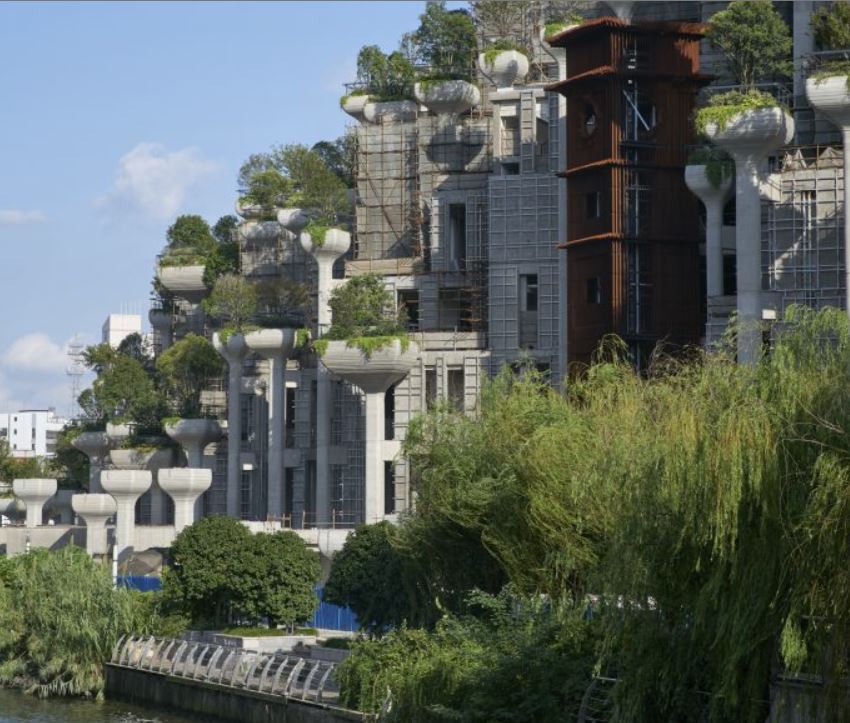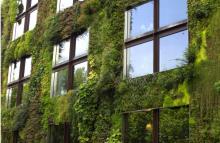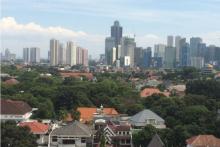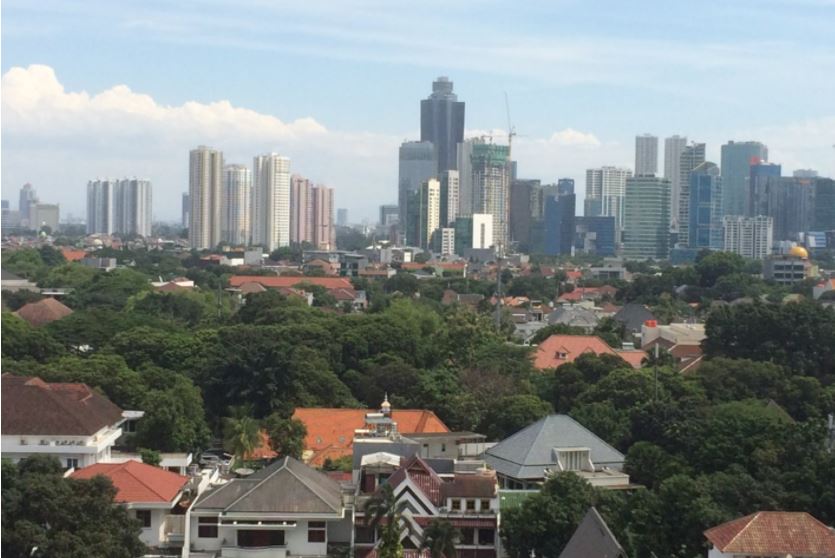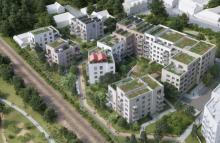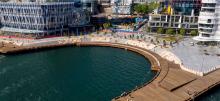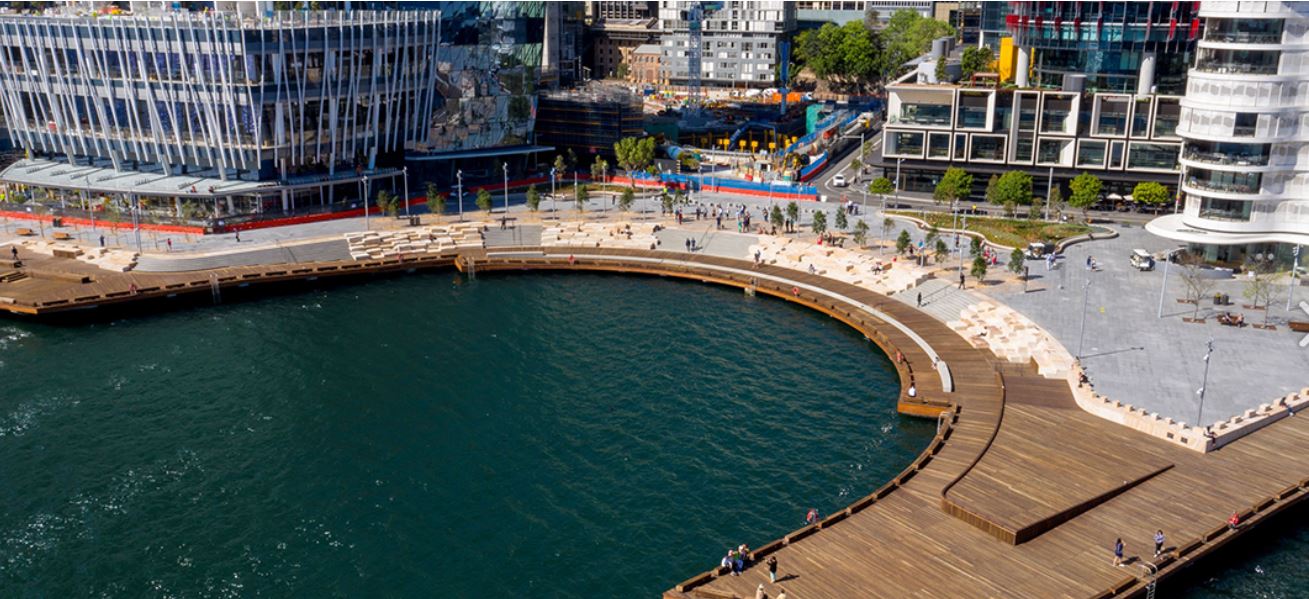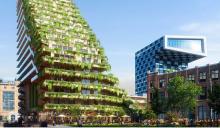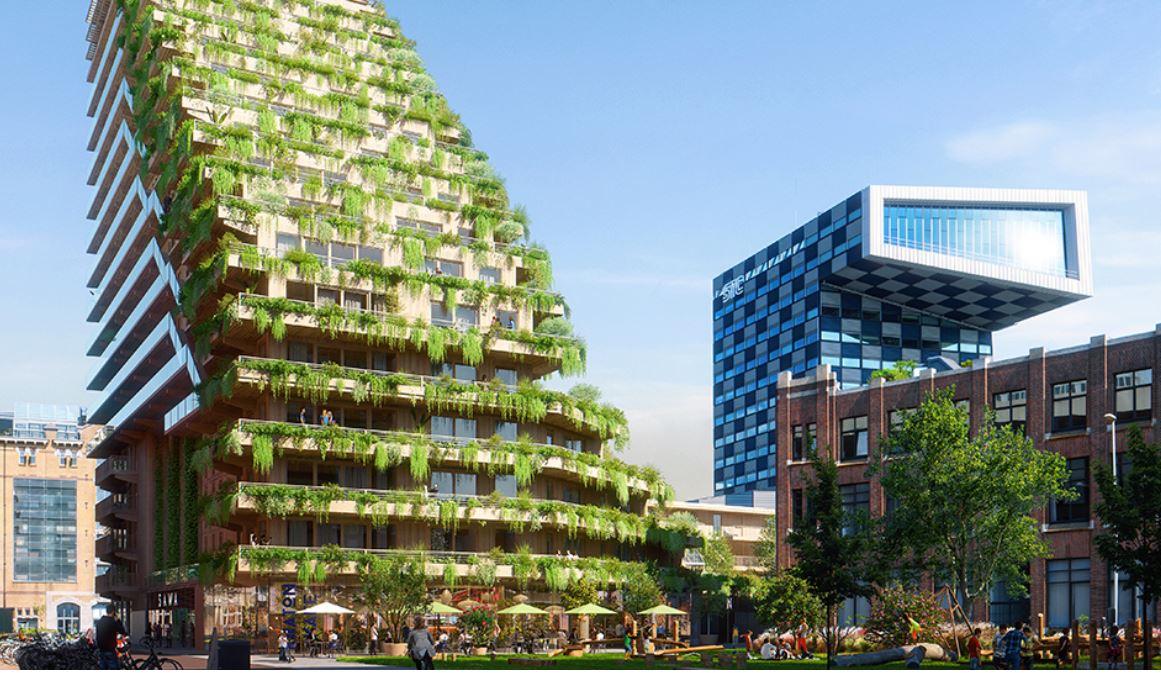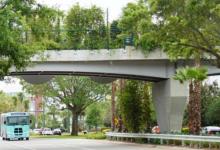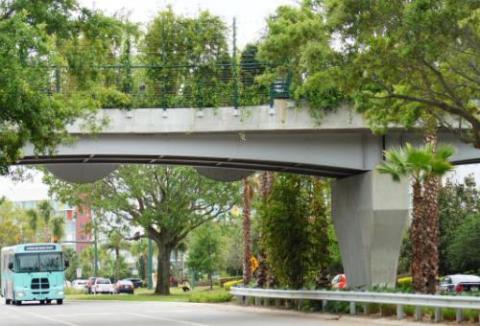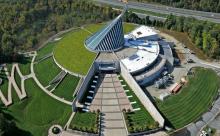Vegetation is returning to our cities. The trend started with rooftop planters on City banks in the 2000s, before spreading to the occasional green wall on a luxury hotel. Now, entire urban blocks are being transformed with ever-more ambitious plant projects.
News
With living walls on skyscrapers and offices sprouting rooftop forests, green buildings have never been so popular.
Brooklyn Navy Yard, an industrial complex on Brooklyn’s waterfront, just installed a group of new environmentally friendly rooftops. The project is a partnership with New York City’s Department of Environmental Protection Green Infrastructure Grant program (DEP), which aims to reduce stormwater “and help keep it out of our sewer system,” said the city’s DEP commissioner, Vincent Sapienza.
The fully accessible, amphitheatre-style boardwalk extends out to create a new public pier, with huge sandstone blocks providing informal seating areas and native species trees creating a shady backdrop to the open waterfront. A feature Fig tree has been planted on part of the original dockside structure.
FROM the Hanging Gardens of Babylon to the orange gardens of Seville, urban planners down the ages have taken inspiration from nature. And those of us living in the concrete and brick jungle have perhaps never appreciated scraps of green space more than during the covid-19 pandemic. During lockdowns, city dwellers across the world have found parks and gardens – where they exist an unexpected source of calm and joy.
Joe Biden unveils $2.6 trillion infrastructure bill
Washington: US President Joe Biden has unveiled a massive $US2 trillion ($2.6 trillion) infrastructure plan he says will allow America to beat China economically and position the country as a global leader in clean energy technology.


